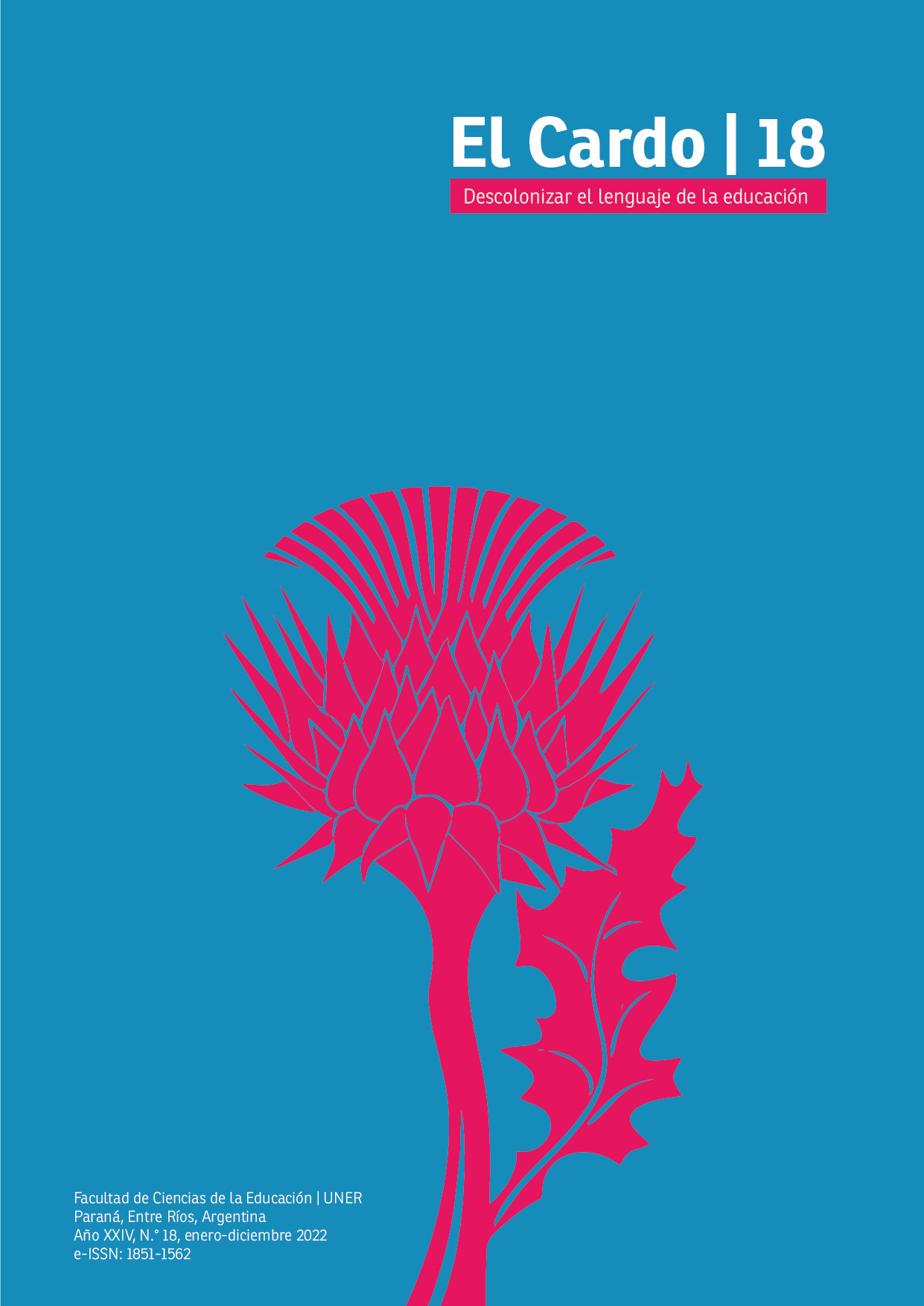Young people and literary reading. A current look from the standpoint of didactics of language and literature
Main Article Content
Abstract
This article reflects on some theoretical notions essential to base and improve the proposals of literary reading aimed at young people, in contexts of formal or non-formal reading mediation, emphasizing a corpus of regional literature, as a possibility or alternative to strengthen and enrich the didactic decisions linked to the positioning of a teacher or mediator of reading and culture committed to their function. The questions that invite reflection come from the updated field of didactics literature, currently worked on in the Didactics of Language and Literature I and II chairs of the specific training of Secondary Education Teachers in Language and Literature (Plan Decree 514/18) of the Instituto Superior de Profesorado N.° 4 of Reconquista, Santa Fe. Thus, the text motivates to rethink the teaching terea, or as mediators of reading in general, from the following questions: What books are presented to young people who go through secondary education? How is its reading proposed? focusing on several central questions: the notion of "canon", the criteria for selecting the corpus and teaching approaches. All of them, in unison, will lead to rethinking didactic decisions, including positioning in the context of teaching and mediation, in the epistemological bases and in the responsibility that belongs to the teacher and mediator in the reading path of young people.
Downloads
Metrics
Article Details

This work is licensed under a Creative Commons Attribution-NonCommercial-ShareAlike 4.0 International License.
Las ediciones no tienen cargos para las y los autores ni para las y los lectores, y se incita a las y los autores a depositar sus contribuciones en otros repositorios institucionales y temáticos, con la certeza de que la cultura y el conocimiento son un bien de todos y para todos. El Cardo permite la reutilización luego de su edición (Post print) citando la autoría y la fuente original de su publicación. Su uso no puede ser con fines comerciales.
References
Agustini, D. (1913). Tu boca. En Agustini. D., Los cálices vacíos. Bertani.
Almada, S. (2014). Ladrilleros. Penguin Random House.
Almada, S. (2019). Mal de muñecas. Vera Cartonera.
Alvarado, M. (1994). Paratexto. UBA.
Andruetto, M.T. (2009). Algunas cuestiones en torno al canon. En Andruetto, M.T., Hacia una literatura sin adjetivos. Comunicarte.
Barthes, R. (1997). La cámara lúcida. Nota sobre la fotografía. Paidós.
Bombini, G. (2001). Avatares en la configuración de un campo: la didáctica de la lengua y la literatura. UBA-UNLP.
Bustamante, P. (2019). Por una literatura juvenil que (se nos) permita seguir creciendo. En Kapichuá, 1, 49-62. https://edicionesfhycs.fhycs.unam.edu.ar/index.php/kapichua/article/view/211
Camilloni, A. (1997). Los obstáculos epistemológicos en la enseñanza. Gedisa.
Cañón, M. (2021). Clase 3: La lectura para construir un mundo más habitable. En Charría, M.E. (Coord.), Curso: El Derecho a la lectura: Prácticas y Estrategias para la formación de lectores (1-28). Ministerio de Educación de la Nación.
Carranza, M. (2020). La horrible consecución de fines útiles. En Catalejos. Revista sobre lectura, formación de lectores y literatura para niños, 6(11), 197-212. http://fh.mdp.edu.ar/revistas/index.php/catalejos/article/view/4679/4688
Carroll, L. (1998). Alicia en el país de las maravillas. Losada.
Chartier, R. (1999). Cultura escrita, literatura e historia. Fondo de Cultura Económica.
Figueroa, E. (2007). La forastera. Recovecos.
Gerbaudo, A. (2006). La literatura desde una agenda didáctica alternativa: lineamientos de una propuesta. En Gerbaudo, A., Ni dioses ni bichos. Profesores, currículum y mercado (147-170). Ediciones UNL.
Gerbaudo, A. (2011). El docente como autor del currículum: una reinstalación política y teórica necesaria. La lengua y la literatura en la escuela secundaria.: Homo Sapiens-UNL.
Gerbaudo, A. (2019). Notas sobre esta edición de Mal de Muñecas. En Almada S., Mal de Muñecas (7-8). Vera Cartonera.
González, H. (2005). La escritura feliz. En Romano Sued, S., Los 90, otras indagaciones (8-12). EpoKé.
Gorriti, J. M. (1865). Quien escucha su mal oye. Confidencia de una confidencia. En Gorriti, J.M., Sueños y realidades (137-151). Casavalle Editor.
Jacob, E. (1994). ¿Cómo formar lectores? Promoción cultural y literatura infantil. Troquel.
Litwin, E. (1996). El campo de la didáctica: la búsqueda de una nueva agenda. En Camilloni, A (Comp.) Corrientes didácticas contemporáneas. Aique.
Litwin, E. (1997). Las configuraciones didácticas. Una nueva agenda para la enseñanza superior. Paidós.
Ministerio de Educación de la Provincia de Santa Fe. (2018). Diseño para los espacios curriculares Didáctica de la Lengua y Literatura i y ii e Itinerario por la Literatura Latinoamericana i y ii. En Ministerio de Educación de la Provincia de Santa Fe, Anexo i de la Resolución 514/18 del Diseño Curricular Jurisdiccional del Profesorado de Educación Secundaria en Lengua y Literatura (145-205). Ministerio de Educación.
Rangel Guerra, A. (2020). Los Problemas de la Historia de la Literatura. HUMANITAS DIGITAL, (3), 229–242. https://humanitas.uanl.mx/index.php/ah/article/view/415
Santamaría, M. (2014). Dionisia la menora. Mesopotamik.





